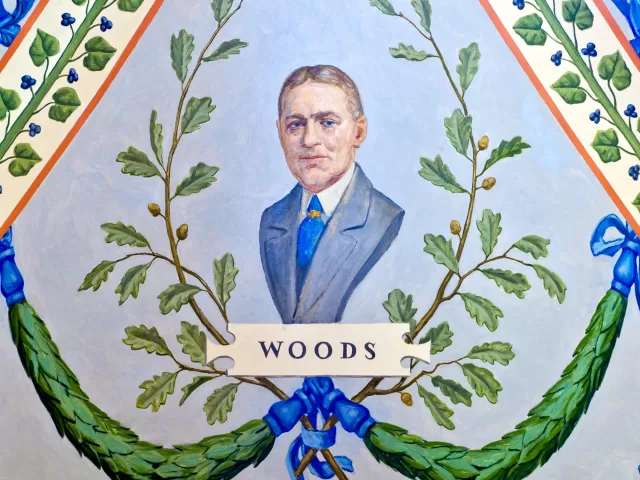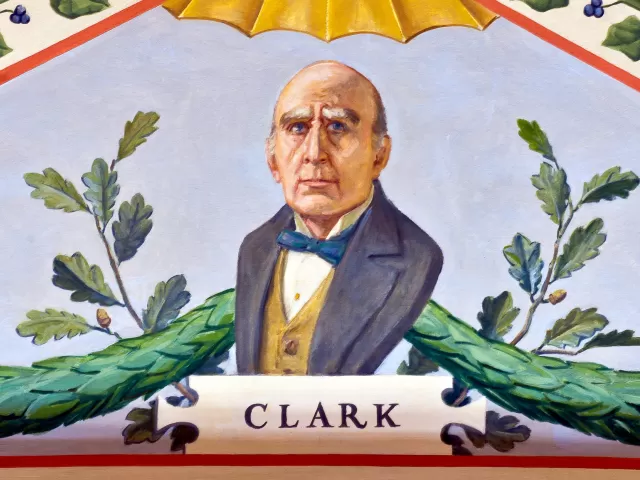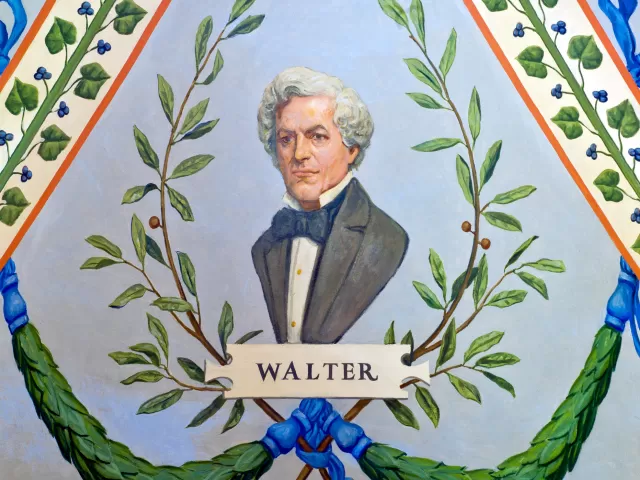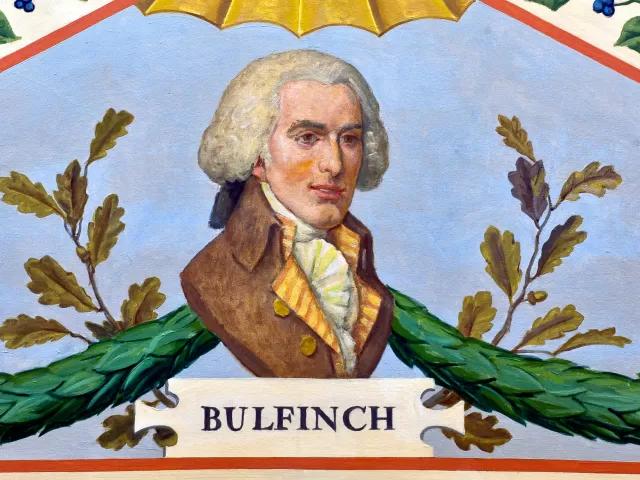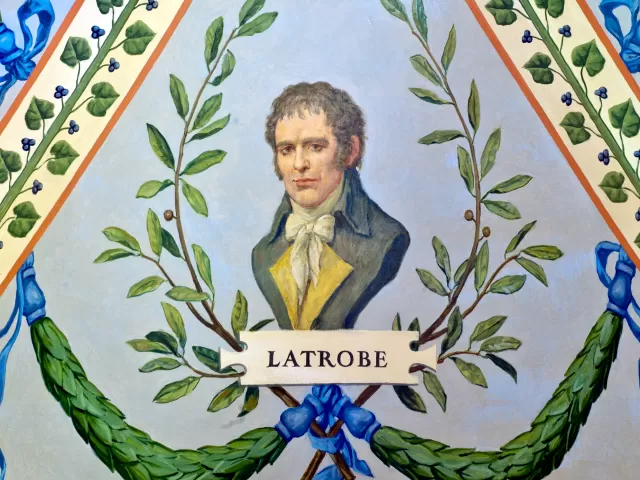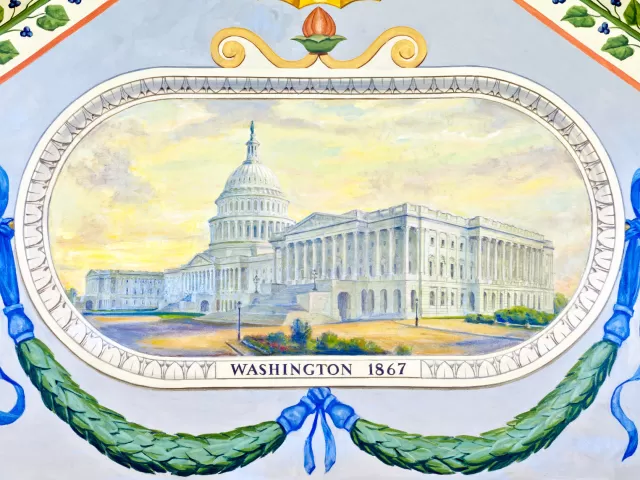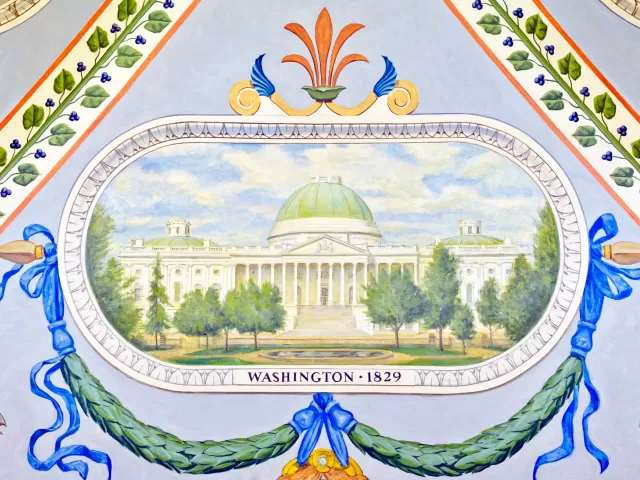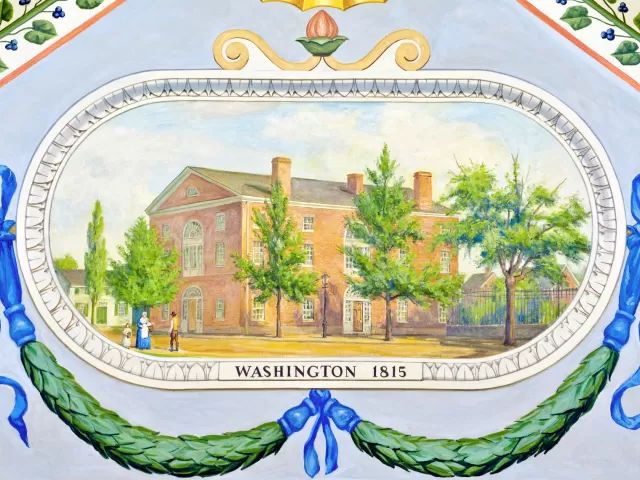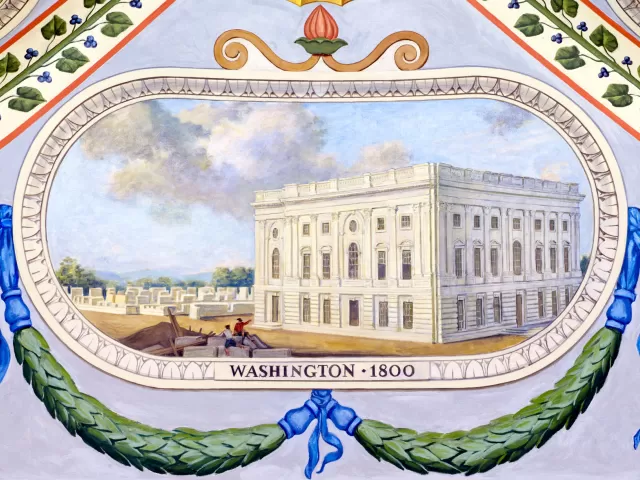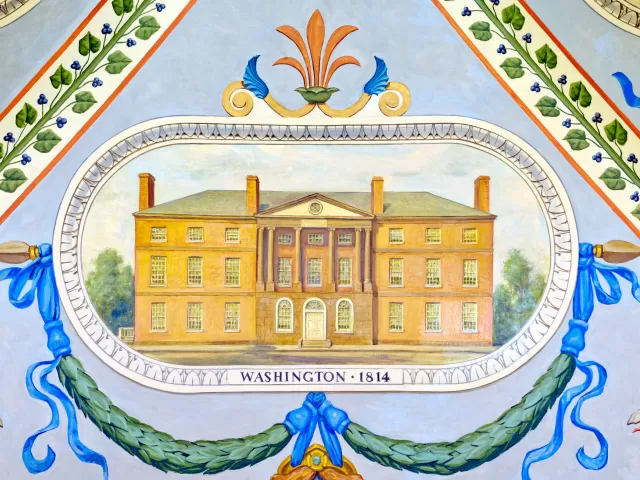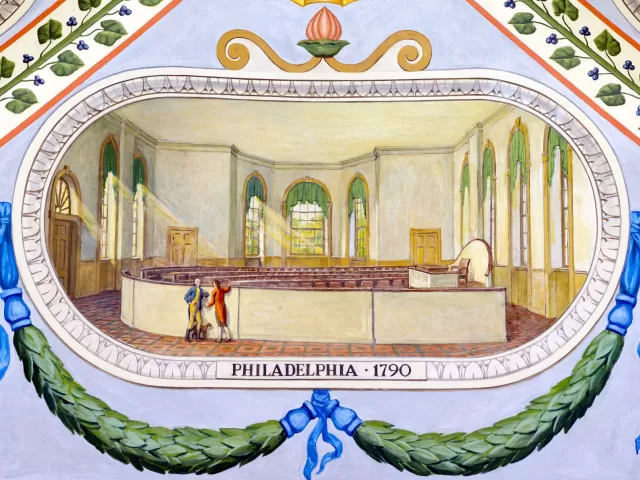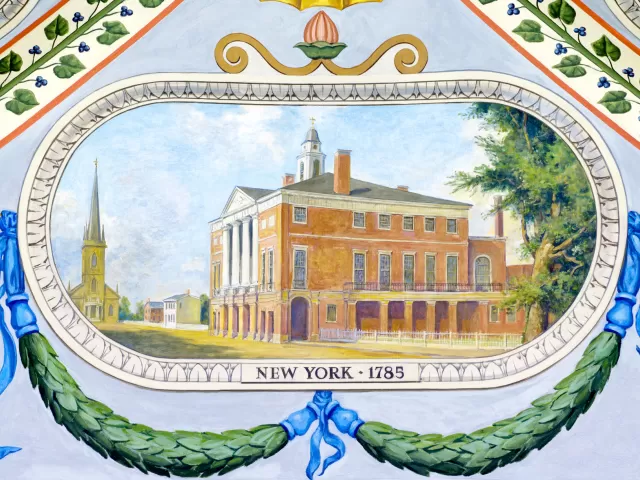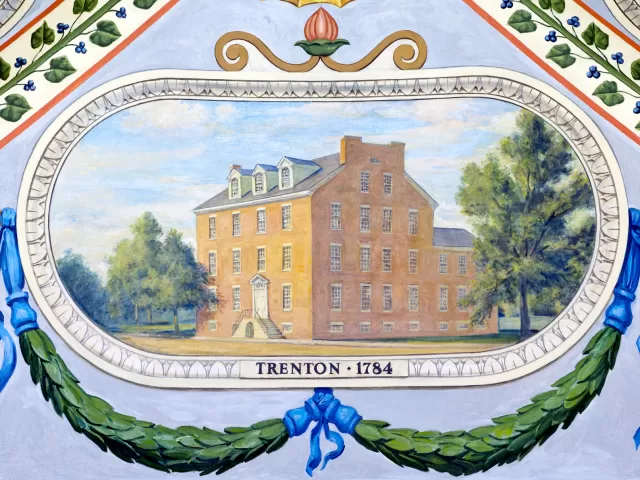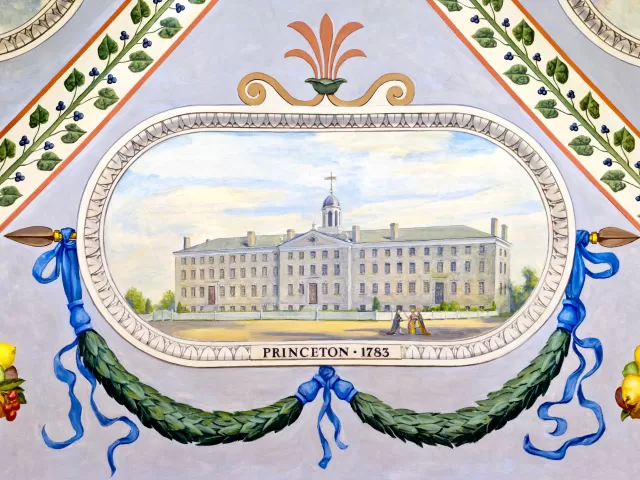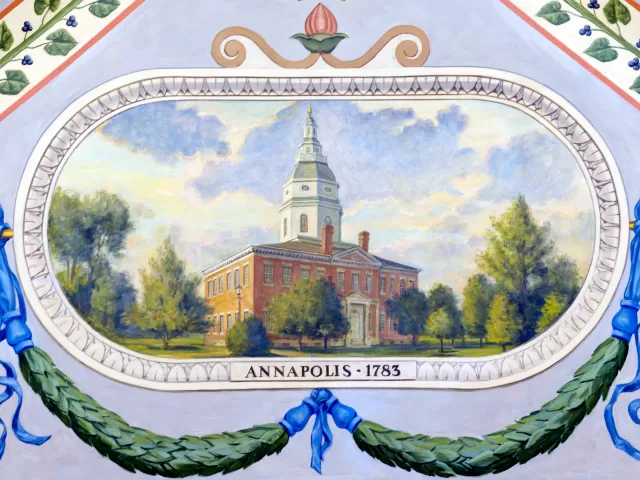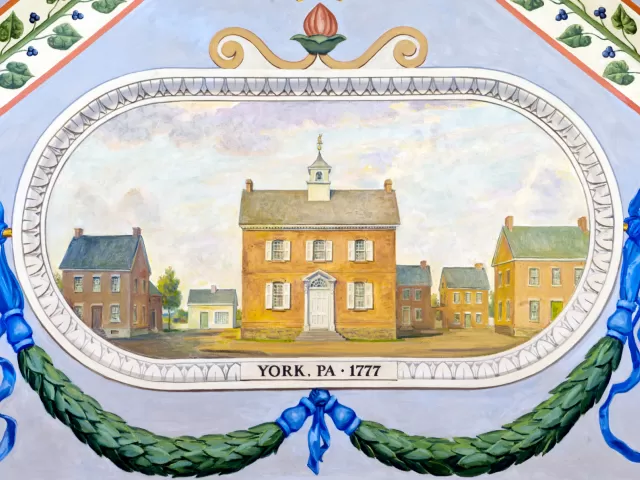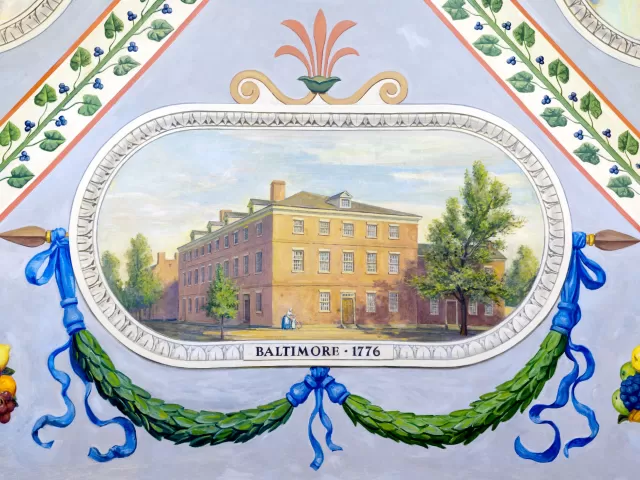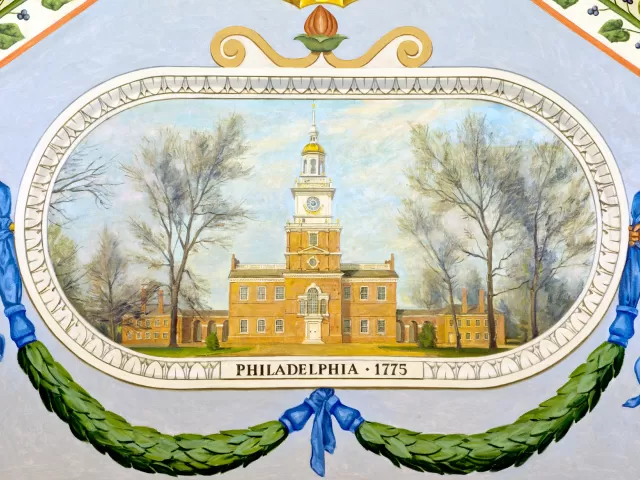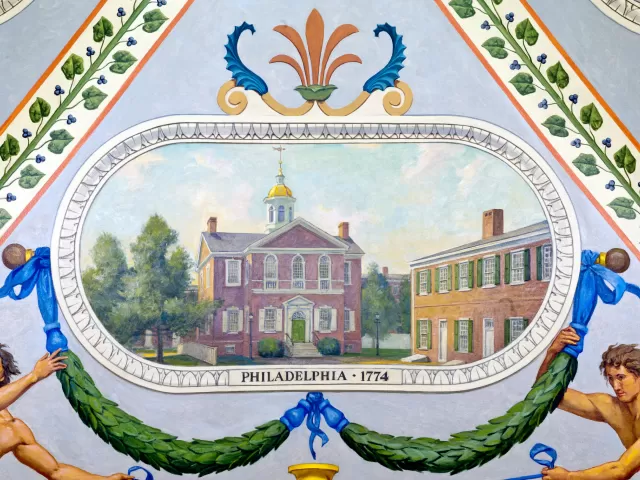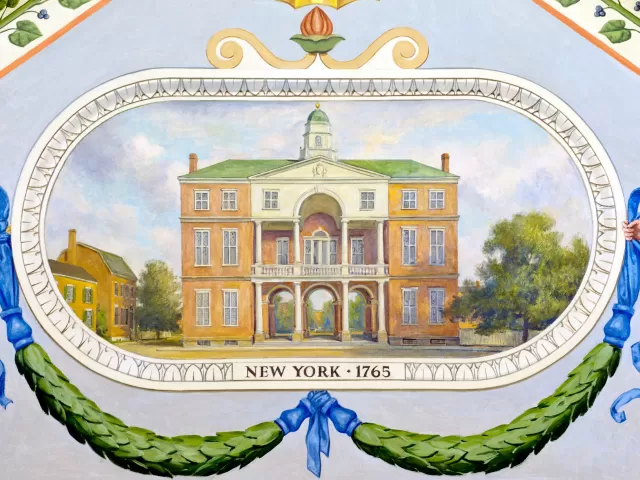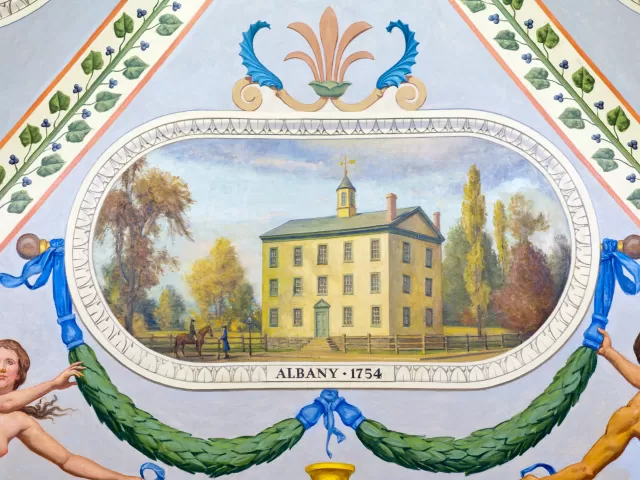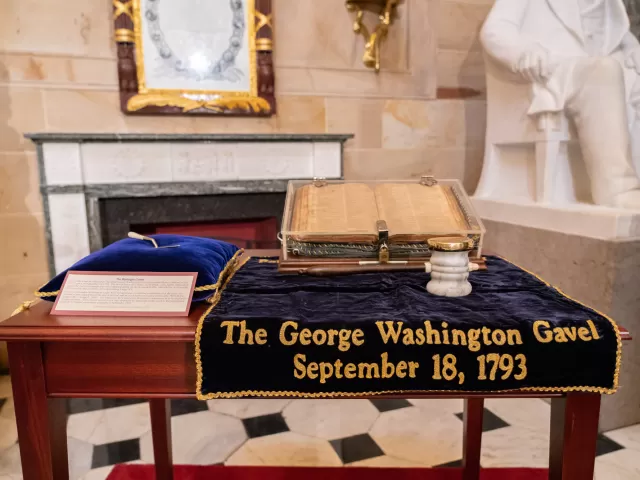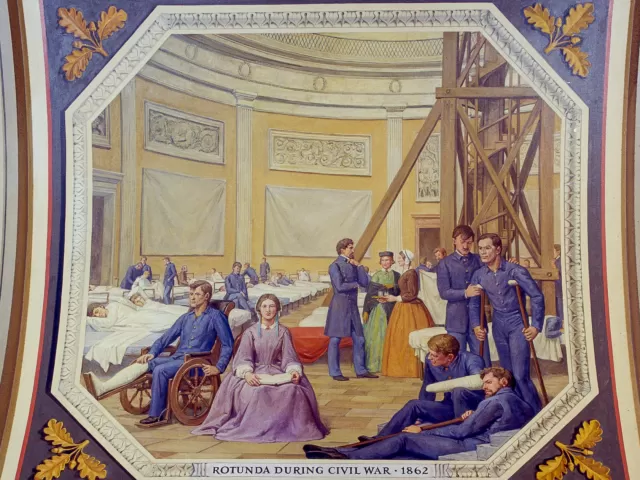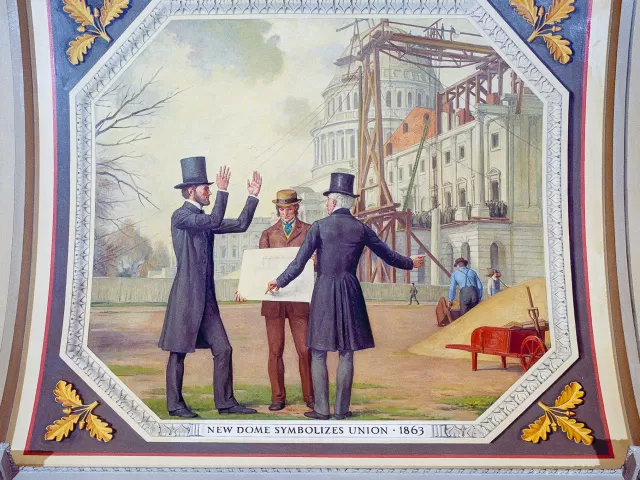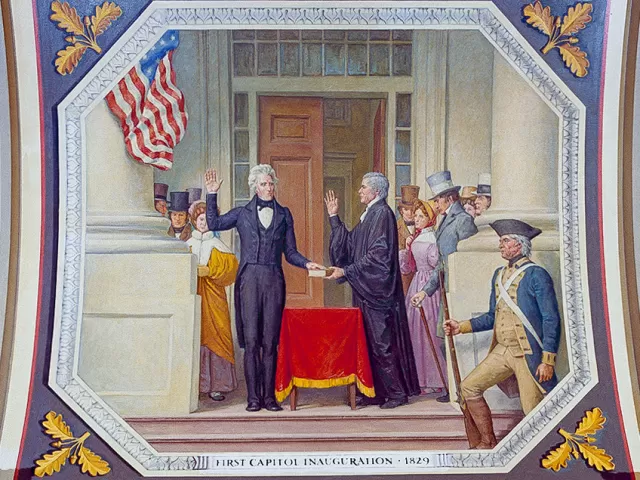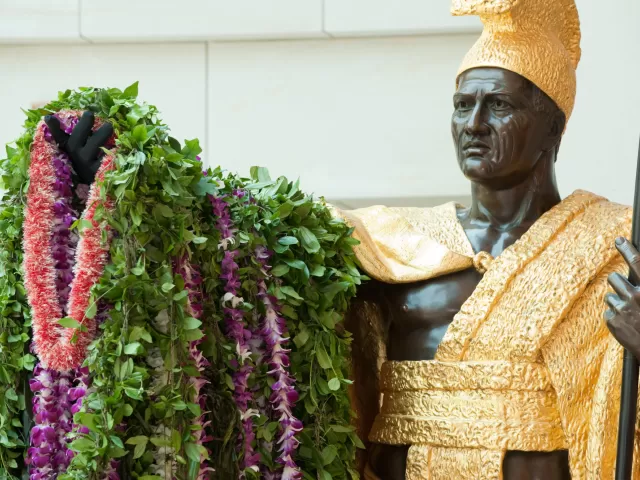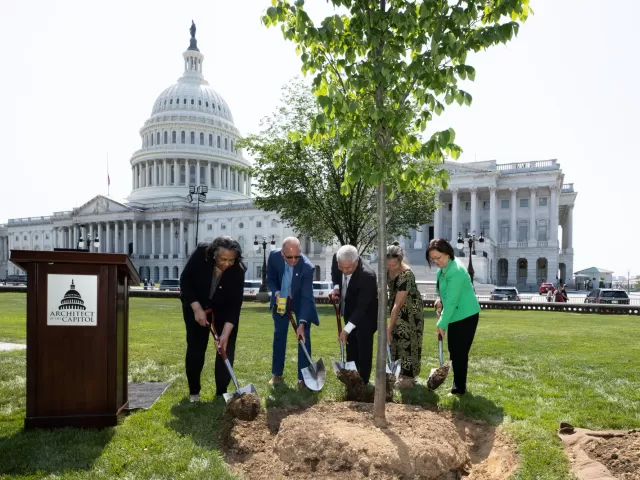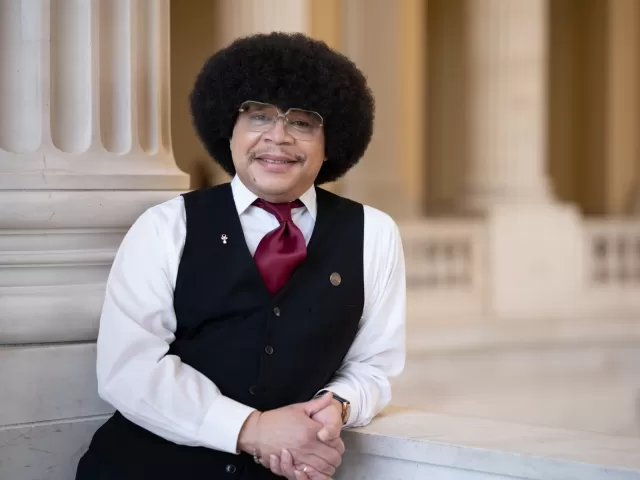Displaying 211 - 240 of 1030 Clear
Highlight
Elliott Woods, who served as Architect of the Capitol from 1902 to 1923, constructed the first House and Senate office buildings (now named the Cannon and Russell buildings, respectively).
Highlight
Edward Clark, the longest-serving architect to date (1865-1902), completed the porticoes of the new wing extensions and oversaw construction of the first Library of Congress building (now named the Jefferson building).
Highlight
Architect Thomas U. Walter served at the U.S. Capitol from 1851 to 1865; he constructed the House and Senate wing extensions and the present dome.
Highlight
Between 1818 and 1829 the Capitol's center section and first dome were constructed under the direction of architect Charles Bulfinch.
Highlight
Benjamin Henry Latrobe, who served as the U.S. Capitol's architect from 1803 to 1811 and from 1815 to 1817, built the Capitol's south wing and redesigned and rebuilt the north wing.
Highlight
The expansion of the nation led to the growth of the Congress, and by 1850 the Capitol Building was much too small. Over a period of 17 years, the present House and Senate wings were added to the old building and the low central dome was replaced with a cast-iron dome better suited to the enlarged
Highlight
The U.S. Capitol Building and Grounds were first completed by Charles Bulfinch in 1829. This image shows the building's East Front.
Highlight
Only the north (Senate) wing of the U.S. Capitol Building was ready for the Congress by 1800. As construction continued on the rest of the building, this wing accommodated the Senate, the House of Representatives, the Supreme Court, the Library of Congress, and the district courts.
Highlight
Only the north (Senate) wing of the U.S. Capitol Building was ready for the Congress by 1800. As construction continued on the rest of the building, this wing accommodated the Senate, the House of Representatives, the Supreme Court, the Library of Congress, and the district courts.
Highlight
In August 1814, during the War of 1812, invading British troops burned the U.S. Capitol and other buildings in Washington. That fall, Congress met in the Patent Office building (now the National Portrait Gallery/Smithsonian American Art Museum).
Highlight
Following passage of the "Residence Act," which required the government to move to a new city on the Potomac River in 1800, Congress moved to Philadelphia for a 10-year stay at Congress Hall.
Highlight
The Congress returned to New York's old City Hall in 1785, 20 years after the meeting of state delegates in that building. Here, in 1789, George Washington was inaugurated president and the first Congress under the Constitution was convened.
Highlight
In November and December 1784 the Congress met in the French Arms tavern in Trenton, New Jersey.
Highlight
In the summer of 1783 Congress moved to Princeton, New Jersey, where it met in Nassau Hall of the College of New Jersey (now Princeton University).
Highlight
The next congressional meeting place was the State House in Annapolis, Maryland. It was here that George Washington resigned his commission as commander in chief of the Continental Army.
Highlight
After leaving Baltimore the Congress met briefly in Philadelphia but soon moved to York, Pennsylvania, where it met for nine months in the old Court House.
Highlight
The Congress moved to Baltimore, Maryland, a safer haven during the war than Philadelphia, after the Declaration of Independence. It met in this rented building, since known as Old Congress House; the building was destroyed by fire in 1860.
Highlight
The Second Continental Congress began convening on May 10, 1775, at the State House in Philadelphia, now known as Independence Hall.
Highlight
The first Continental Congress met at Carpenters' Hall in Philadelphia, Pennsylvania, where they agreed to suspend trade with Great Britain.
Highlight
The Old City Hall in New York was the meeting place for delegates from nine colonies, who drew up a Declaration of Rights.
Highlight
At the old Stadt Huys in Albany, New York, colonial representatives devised a plan for a union of the colonies. The plan was ultimately rejected, but it became a guide for the later federal government.
Highlight
Contemporary Masonic practice included the laying of an inscribed metal plate along with a cornerstone. Caleb Bentley, a Quaker clockmaker and silversmith who lived in Georgetown not far from Suter's Fountain Inn, where the commissioners held their meetings, made the silver plate for the Capitol
Project
When the Architect of the Capitol (AOC) does not receive enough funding to pay for all maintenance and repairs required across the U.S. Capitol campus, work gets deferred due to budget constraints.
Highlight
For about six weeks in the fall of 1862 the Rotunda (as well as other chambers and hallways) was used as an emergency hospital. Among the nurses who served here were Dorothea Dix and Clara Barton, later the founder of the American Red Cross. About the Cox Corridors Murals The first floor of the U.S
Highlight
Thomas U. Walter, who was hired as architect of the Capitol extensions in 1851, also designed the building's new cast-iron dome. In this mural Walter (center, in brown coat and top hat) shows his dome design to President Abraham Lincoln. About the Cox Corridors Murals The first floor of the U.S
Highlight
Andrew Jackson, the first president to be inaugurated outdoors at the Capitol, is shown taking the oath from Chief Justice John Marshall. This ceremony on the east front portico began a tradition observed by most presidents until 1981, when inaugurations were moved to the west front. About the Cox
Basic page
This list includes works in the collections under the care of the Architect of the Capitol, U.S. House of Representatives and U.S. Senate, and is not exhaustive.
Highlight
U.S. Capitol Grounds memorial tree to honor the life and service of Senate Librarian Leona Faust sponsored by Senate Majority Leader Charles E. Schumer and Senate Minority Leader Mitch McConnell.
Public Notice
Article
Located near Northeast Drive, across from the Senate wing of the U.S. Capitol Building.
Behind the Scenes
Article
Perhaps it's the charm of the historic campus or the weight of the symbolism it carries around the world, but at the Architect of the Capitol (AOC), it's not hard to find an employee who has spent their entire career serving this treasured institution.
